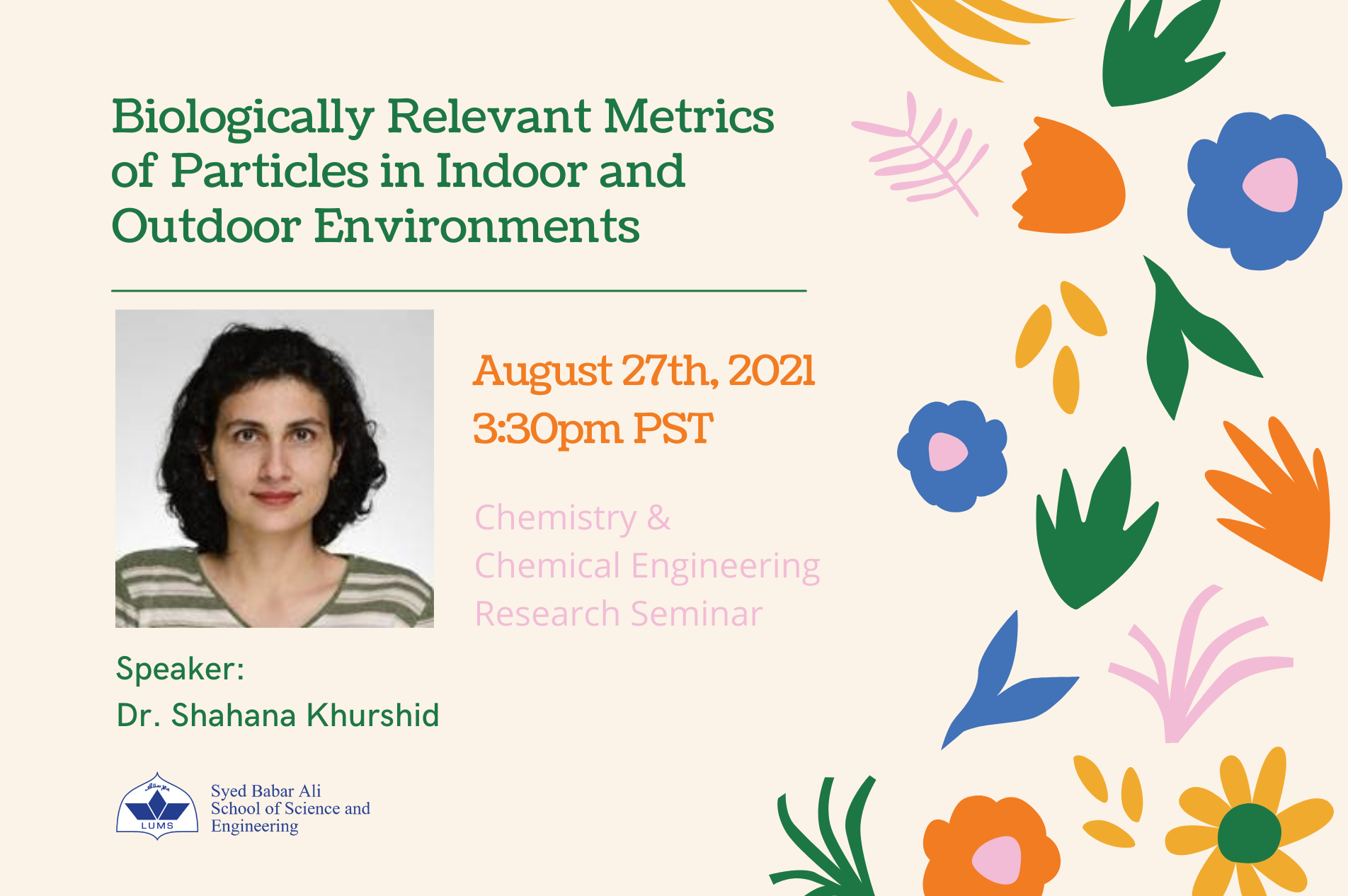
Biologically Relevant Metrics of Particles in Indoor and Outdoor Environments
The Department of Chemistry and Chemical Engineering is holding an insightful seminar on the topic of "Biologically Relevant Metrics of Particles in Indoor and Outdoor Environments" by Dr. Shahana Khurshid on 27 August 2021, at 3:30pm PST.
About the Speaker: Dr. Shahana Khurshid studies air pollutants and their ability to cause adverse health effects. She has led over 25 research projects in universities, companies, and federal labs on air quality, exposure to pollutants, environmental conservation, cell lines, polymers, and biomedical assays. She grew up in Karachi, Pakistan before moving to the U.S. to pursue higher education where she received her B.S. in Environmental Engineering from MIT graduating in the top 5% of her class, M.S. in Biomedical Engineering and Ph.D. in Environmental Engineering from UT Austin. After her Ph.D. she has worked at the National Institute of Standards and Technology (NIST) and at UT Austin.

